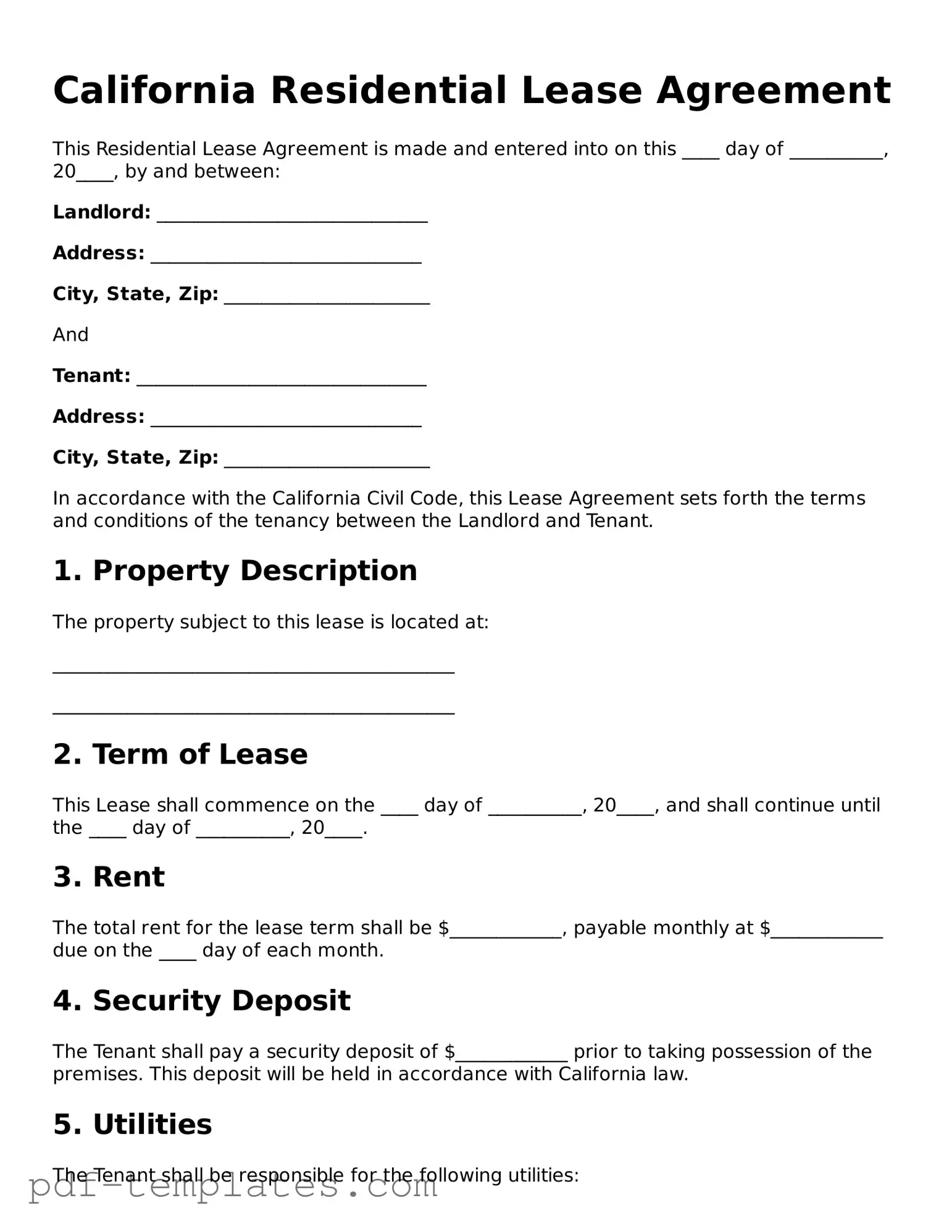The California Rental Application is a document that landlords use to screen potential tenants. It collects personal information, employment history, and references. This helps landlords assess the suitability of applicants before signing a lease. Like the Residential Lease Agreement, it serves to protect the interests of the landlord while ensuring that tenants are qualified to rent the property.
The Month-to-Month Rental Agreement is another document that offers flexibility to both landlords and tenants. Unlike a traditional lease that typically spans a year, this agreement allows either party to terminate the lease with proper notice. Similar to the Residential Lease Agreement, it outlines the terms of occupancy, including rent amount and responsibilities, but with a shorter commitment period.
The Commercial Lease Agreement is designed for businesses renting commercial spaces. While the Residential Lease Agreement focuses on residential properties, both documents share similar structures, including terms regarding rent, duration, and responsibilities. They both aim to protect the rights of the landlord and tenant, though the specifics cater to different types of properties.
The Sublease Agreement allows a tenant to rent out their leased property to another individual. This document mirrors the Residential Lease Agreement in that it outlines the terms of the rental arrangement, including rent and duration. Both agreements ensure that all parties understand their rights and responsibilities, although the sublease involves an additional tenant.
The Lease Addendum is an additional document that modifies or adds terms to an existing lease. It can clarify specific rules or conditions that were not included in the original Residential Lease Agreement. Both documents work together to provide a comprehensive understanding of the rental terms, ensuring that all parties are on the same page.
The Lease Renewal Agreement is used when both the landlord and tenant agree to extend the lease for another term. This document is similar to the Residential Lease Agreement, as it reiterates the terms and conditions of the original lease while making any necessary updates. It helps maintain continuity in the rental relationship while allowing for adjustments if needed.
The Eviction Notice is a formal document that a landlord may issue to a tenant who has violated lease terms. While it serves a different purpose than the Residential Lease Agreement, both documents are essential in the landlord-tenant relationship. They outline rights and obligations, with the eviction notice enforcing the terms laid out in the lease.
The Property Management Agreement is a contract between a property owner and a management company. It outlines the responsibilities of the management company in handling rental properties. Similar to the Residential Lease Agreement, it establishes terms and conditions, ensuring that both parties understand their roles in managing the rental property effectively.
